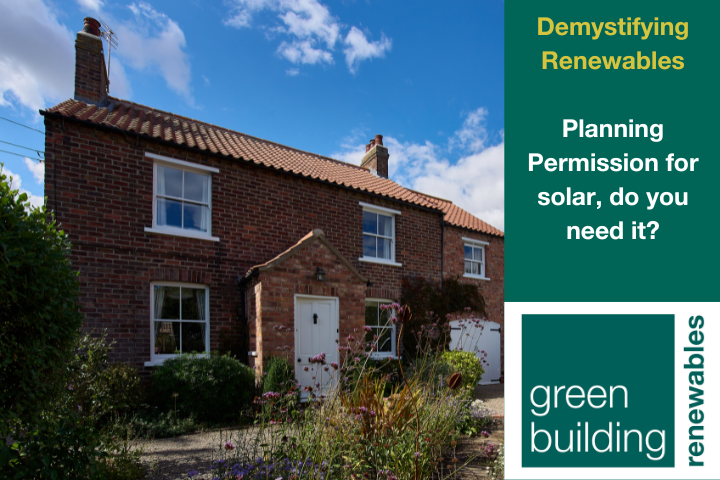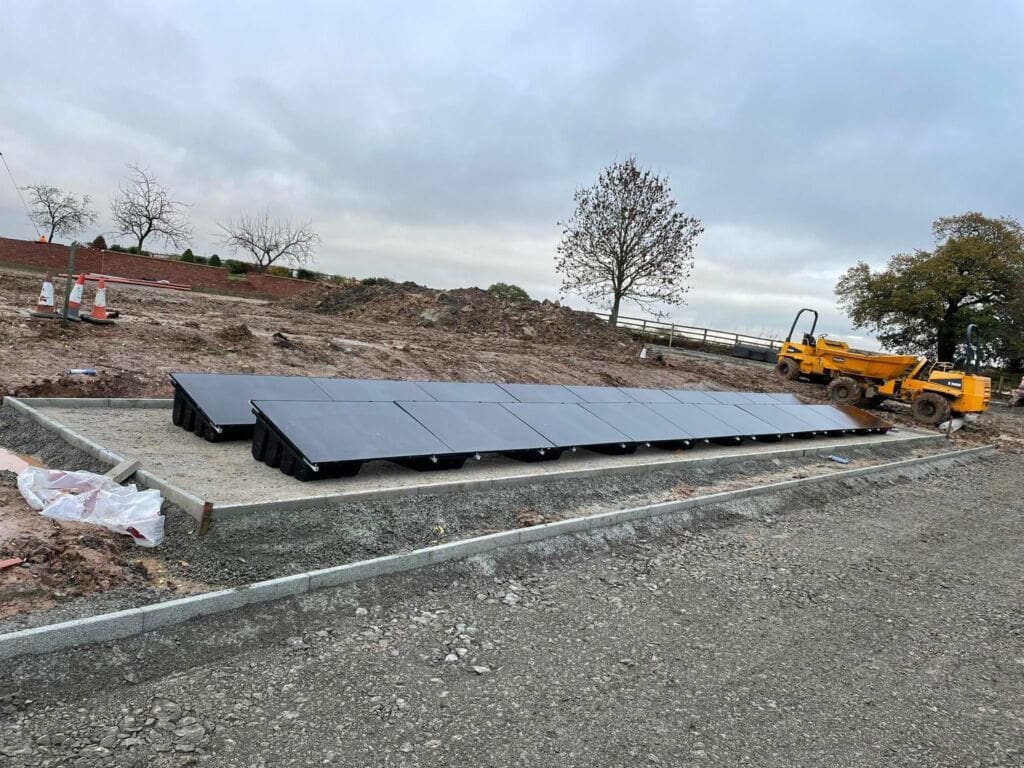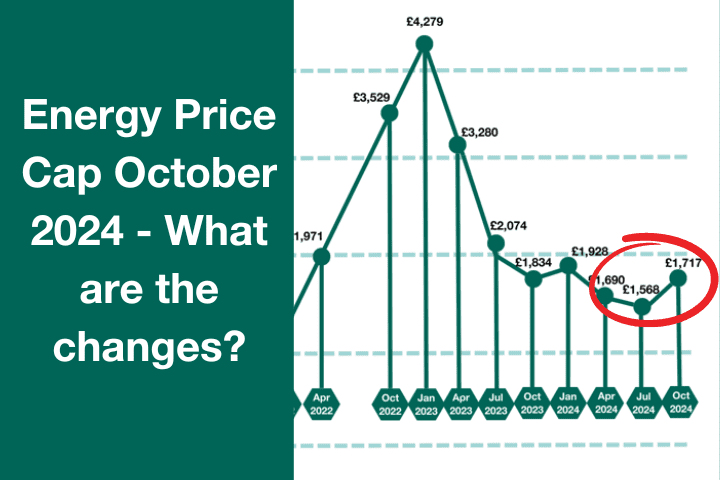Do I need planning permission for solar panels? 5 things you need to know

If you’re considering installing solar panels on your property, one of the questions that may come to mind is whether or not you need planning permission. The good news is that in many cases, planning permission is not required for solar panel installations.
However, there are some exceptions and regulations that you should be aware of before proceeding with your installation. In this article, we will explore more about what solar panels are, the typical types of solar panel installations homeowners have, and the topic of planning permission for solar panels in more detail to help support you with everything you need to know when considering having solar panels installed.
Table of Contents
1. What are solar panels?
It’s fair to say that renewable energy, and in particular, solar panels, have attracted a lot of media attention over the last couple of years. With rising energy bills and people looking to live a more sustainable way of life, solar panels are the perfect solution, yet what exactly are solar panels and how do they work and benefit us?
Solar panels are a type of technology that harnesses the power of sunlight to generate electricity. They are made up of photovoltaic cells, which convert sunlight into direct current (DC) electricity. This DC electricity is then converted into alternating current (AC) electricity through an inverter, which can be used to power homes and businesses.
One of the most significant benefits of solar energy is its positive impact on the environment. Unlike traditional fossil fuels, solar energy does not produce harmful greenhouse gas emissions that contribute to climate change. By using solar panels to generate electricity, we can reduce our reliance on fossil fuels and help to reduce carbon emissions.
In addition to being environmentally friendly, solar energy also has the potential to save homeowners money on their energy bills over time. As the technology behind the production of solar panels continues to improve and become more affordable, we will likely see even more widespread adoption of solar panels as a viable alternative source of renewable energy.
2. Types of solar panel installations
When it comes to solar panel installations, there are currently only a few types to consider, including roof-mounted, ground-mounted, and solar tiles.
Roof-mounted solar panels are the most common type of installation. They are installed on the roof of a property and can be either flush-mounted or tilted. This type of installation is ideal for those who have limited space on their property or want a discreet option.
Ground-mounted solar panels are installed on the ground using a mounting system. This type of installation is ideal for those who have ample space on their property and want maximum efficiency from their solar panels.
Solar tiles are an innovative new option that combines the benefits of traditional roofing materials with the power-generating capabilities of solar panels. They can be used as an alternative to traditional roofing materials or as an addition to existing roofs.
Each type of installation has its advantages and considerations. Therefore, when discussing your options with a solar panel installer make sure you’re clear on what these differences are so that you can make an informed decision about which type of solar panel installation will best meet your needs.

3. Permitted Development
Permitted Development Rights (PDR) are a set of planning rules that allow certain types of development to be carried out without the need for a full planning application. This can include small-scale changes to buildings, such as adding solar panels.
The relevance of PDR to solar panel installations is significant, as it allows homeowners to install solar panels on their properties without having to go through the lengthy and potentially costly process of obtaining planning permission.
However, there are general guidelines that must be followed when installing solar panels under PDR. These include:
- Ensuring that the panels do not protrude more than 200mm beyond the wall or roof
- The solar panel is no higher than the roof (excluding any chimney)
- If your property is in a conservation area or a World Heritage Site, panels must not be fitted to a wall which fronts a highway.
Property owners need to be aware of any restrictions that may apply before installing solar panels under PDR. Failure to comply with these restrictions could result in enforcement action being taken by the local planning authority.

4. Planning permission in Conservation areas and listed buildings
Conservation areas and listed buildings are protected by law due to their historical or architectural significance. As a result, any changes made to them must be carefully considered and approved by the relevant authorities. This includes the installation of solar panels, which can have an impact on the appearance and character of these buildings.
While planning permission is not usually required to install solar panels on the roof of a house in a conservation area, even if the roof faces a highway, it is required when installing solar panels or other equipment on a wall fronting a highway within conservation areas.
All installations must meet certain conditions:
- the solar panels shall, so far as is practicable, be installed so as to minimise the effect on the external appearance of the building
- the solar panels shall, so far as practicable, be sited so as to minimise the effect on the amenity of the area
- any solar panels no longer needed for micro-generation are removed as soon as is reasonably practicable
In the instance that you own a listed property, then you will need to obtain “listed building consent” (LBC) from your local council before you can install solar panels on the roof. You can start this process by visiting the National Heritage List for England (NHLE) website to check if the property is listed. Bear in mind that you may still need to apply for planning permission after you have obtained LBC.
To receive LBC, you must be able to demonstrate that the solar panels will not cause any major structural damage or significantly alter the character or appearance of the property. This would mean, should the solar panels be removed, the building would still look the same and cause no permanent damage to the property.
5. Building Regulations
In addition to any considerations required around planning permission, it’s worth still remembering that building regulations will normally apply when installing solar panels to your roof.
Your first consideration will need to be can the existing roof carry the load (weight) of the panel. This is likely to be picked up by the installer when conducting a roof survey, and should there be any doubt, some strengthening work may be needed.
Building regulations also apply to other aspects of the work, such as electrical installation; this is where your installer will also need to have the necessary qualifications, which they should be able to provide you should you ask.
Conclusion
Unlike some home improvements, installing solar panels should be a relatively smooth and stress-free process because, more often than not, planning permission isn’t required. However, properties in a conservation area or that are listed buildings do have slightly different requirements, therefore, you must check what additional permission may be required before completing any work to avoid any legal ramifications further down the line.
Remember that building regulations still apply, and if your roof isn’t fit for purpose, you may need additional building work to be carried out ahead of the solar panels being fitted.
If you’re looking to lead a more sustainable life, here at Green Building Renewables, we can provide you with tailor-made environmentally-friendly solutions to meet your future energy needs. Take a look at our office locations to find your nearest installer to discuss your renewable energy needs.




